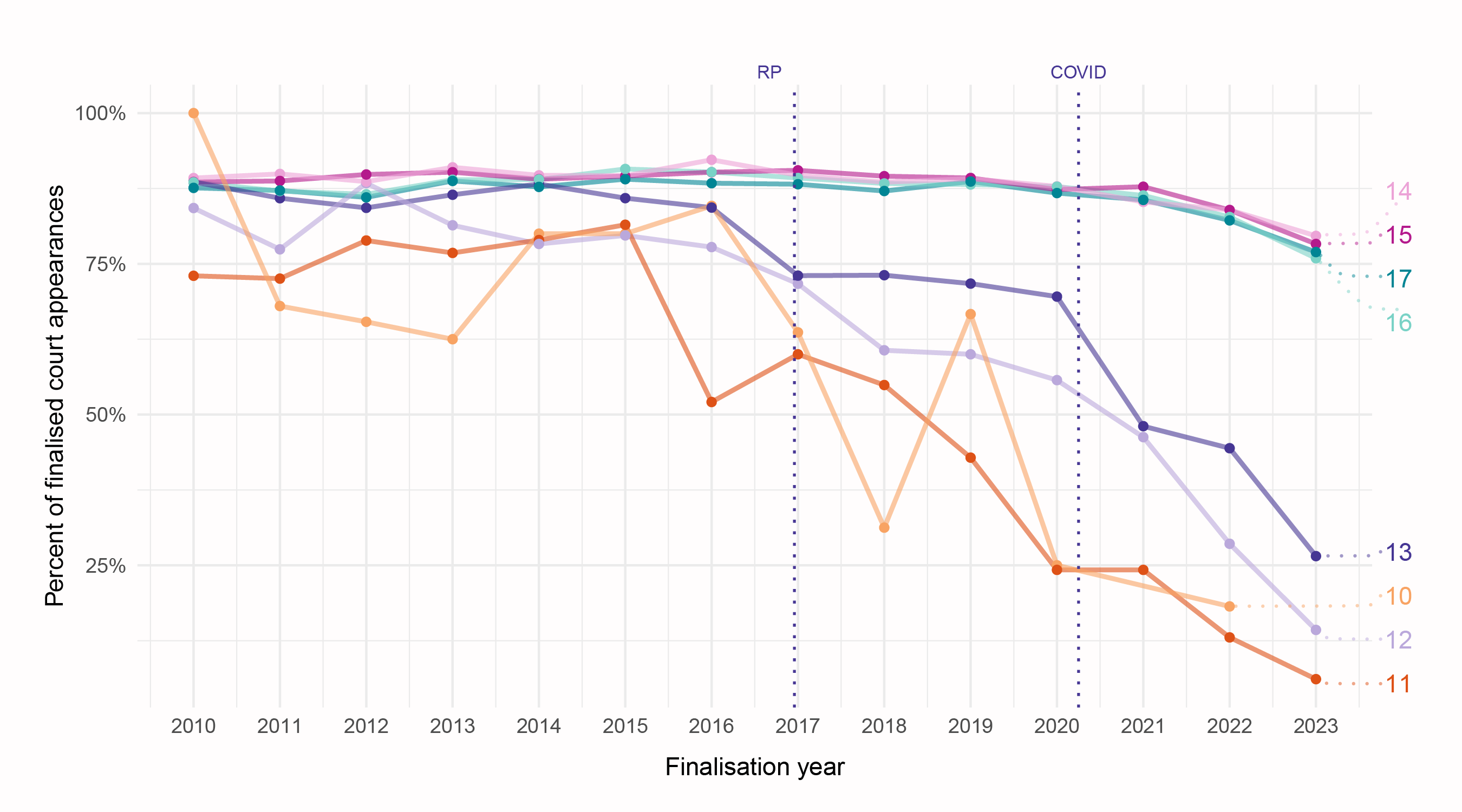Automatic language translation
Our website uses an automatic service to translate our content into different languages. These translations should be used as a guide only. See our Accessibility page for further information.
Between 2016 and 2023, there was a sharp fall in the proportion of matters where a 10-13 year old was found guilty of a criminal offence in the Children’s Court of NSW.
This paper investigates whether this decline and other trends in court outcomes can be explained by the impact of a 2016 High Court of Australia decision (RP v R (‘RP’)), which clarified the application of doli incapax (i.e., legal protections available to 10-13 year olds). We examine trends across five outcomes. First, the volume of court appearances involving a 10-13 year old. Second, whether these court appearances result in a proven offence. Third, among cases with a proven offence, the severity of the sanction imposed. Fourth, the extent to which prosecutors elect to withdraw charges. Finally, the proportion of 10-13 year olds who enter a plea of guilty.
We investigate the impact of RP by comparing trends in court outcomes for 10-13 year olds (who are generally protected from prosecution by doli incapax) with 14-17 year olds (who are not protected by doli incapax) between 2010 and 2023. We draw upon data from the Children’s Court of NSW and aggregated data from Children’s Courts across the rest of Australia.
Using these data, we investigate how and why these five outcomes have changed over time.
There is little evidence to suggest that the RP decision had any impact on the volume of court appearances involving a 10-13 year old. However, among 10-13 year olds that NSW Police charge with a crime, there has been a dramatic decline in the proportion with a proven offence; the percent proven fell from 76% in the 2015-16 financial year to 16% in 2022-23. This reduction coincides temporally with the RP decision. Among matters with a proven offence, the RP decision had no clear impact on the severity of the penalty imposed. The decrease in the percentage of proven charges cannot be explained by changes in the nature of offences committed by 10-13 year olds (i.e., this age group is not increasingly committing types of crime that are harder to prosecute), by increases in the number of specialist magistrates or by changes in the demographic characteristics of children proceeded against.
The decline in proven matters is, however, associated with an increase in prosecutors withdrawing all charges (withdrawals increased from 12% in 2015-16 to 53% in 2022-23) and a decline in the proportion of 10-13 year olds entering a guilty plea (sentence only finalisations fell from 54% in 2015-16 to 14% in 2022-23). Similar patterns occurred in Victoria and South Australia.

The available evidence suggests that, by stipulating what is required to rebut doli incapax, the 2016 High Court of Australia’s decision RP v R likely reduced the number of young people aged 10-13 found guilty of a criminal offence.
Last updated: